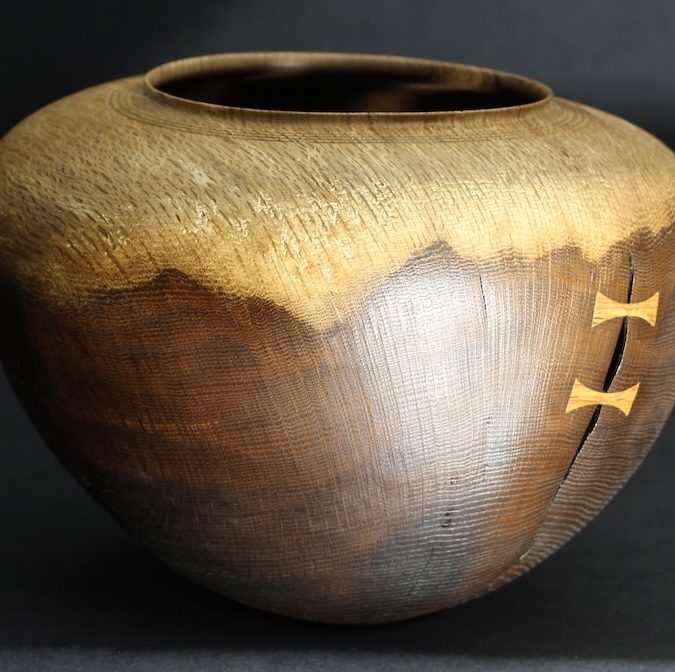
Design is a static, unmoving thing – at least until we ourselves cause the thing to move. But is that necessarily true?
A new exhibition in New Plymouth is challenging this prevailing belief. Starting from the work of late New Zealand artist Len Lye, the Govett-Brewster Art Gallery presents Set in Motion, with work by four artists working in the field of kinetic sculpture and experimental projection.

Ross Manning ‘Six Short Films’ 2016. Installation view at the Govett-Brewster Art Gallery/Len Lye Centre.
Aside from the work of Lye (who was born in 1901, and died in 1980), the exhibition presents kinetic sculpture, projection and live performances by artists Rebecca Baumann (Australia), Žilvinas Kempinas (Lithuania and the United States), Taree Mackenzie (Australia) and Ross Manning (Australia). The exhibition, which runs until 27 November, considers how artists today experiment with everyday technical and industrial objects and materials in their explorations of movement, light and sound.
Director Simon Rees says, “Len had it right when he famously said that his ‘work was looking pretty good for the 21st century’, as his kinetic sculpture Zebra looks right at home alongside this spectacular group of objects made today.”

Žilvinas Kempinas ‘O2’ 2006, magnetic tape, fan. Private Collection. Courtesy of the artist and Lio Malca, New York.
Exhibition curator Sarah Wall says the show celebrates the talents of a visionary New Zealand artist whose sculptures and films continue to resonate and excite more than three decades after his passing. “It inspires us to consider how Lye’s work continues to be a catalyst and source of inspiration for artists today,” she says.
The exhibition will also push people towards sensory overload because of the dynamic play of colour, light and sculptures moving in space, Wall says. “Len Lye was an artist who constantly pushed the boundaries of his practice, experimenting with new materials, techniques and technology in his attempts to make motion ‘tangible’. One of Lye’s great skills was his resourcefulness and inventiveness in adapting tools and techniques to his own creative ends.”
Lye came to prominence through his experimental film and kinetic sculpture. In Lye’s Zebra (1965, 2009), a fibreglass rod spins and swirls into constantly changing figures and patterns of motion. “Color Cry (1952-53) was the first direct film Lye made while living in New York’s Greenwich Village,” explains Wall. “Made by applying his own photogram techniques to film, Color Cry is much more than a film of colour and movement, it’s a play of shadow and light.”

Len Lye ‘Zebra’ 1965 (2009 reconstruction) details. Len Lye Foundation Collection. Courtesy of the Govett-Brewster Art Gallery/Len Lye Centre. Photography Sarah Dalle Nogare.
Central to Rebecca Baumann’s practice is her interest in colour and its effect and transference through different materials. In her kinetic sculpture Once More with Feeling (2014), Baumann replaced aluminium prisms of a tri-vision billboard with transparent panels of plexiglass so that, when spot lit, lines of coloured light are cast around the space.
The other artists at the exhibition also boast some impressive accolades. Žilvinas Kempinas is a Calder Prize winner and has had works installed at major museums all over the world. His sculptures, made from tape unspooled from old VHS tapes, almost seem to defy gravity and logic by making the tape dance and fly through the air thanks to the breeze from nearby fans.
Using video equipment and props, Taree Mackenzie makes illusory images and environments. Viewers find it hard to match the image they see to the equipment producing it. In Black Line Formation (2013), an abstract play of lines moves and intersects across a white screen. Nearby on the floor is a hand-cam, a light box, and a small geometric structure on top of a slowly spinning turntable. The purpose of them is to make these “everyday” objects the things that power the projection.

Rebecca Baumann ‘Once More with Feeling’ 2016. Installation view at the Govett-Brewster Art Gallery/Len Lye Centre. Photo Glenn Jeffery.
Ross Manning adapts and reuses everyday objects and technology to create kinetic sculptures that produce old school sci-fi visual effects. For Set in Motion, he presents a new kinetic sculpture based on his research in the Len Lye Foundation Collection and Archive.
Aside from the kinetic sculptures, Set in Motion also includes drawings and sketches that give an insight into the artists’ thinking and working. There’s also a catalogue featuring commissioned essays by Amelia Groom, Adam Jasper, Hannah Mathews, Patrice Sharkey and Danni Zuvela.
The takeaway from all this: kinetic design is very much a part of our world today. All we have to do to notice it, it seems, is to stop moving ourselves.




